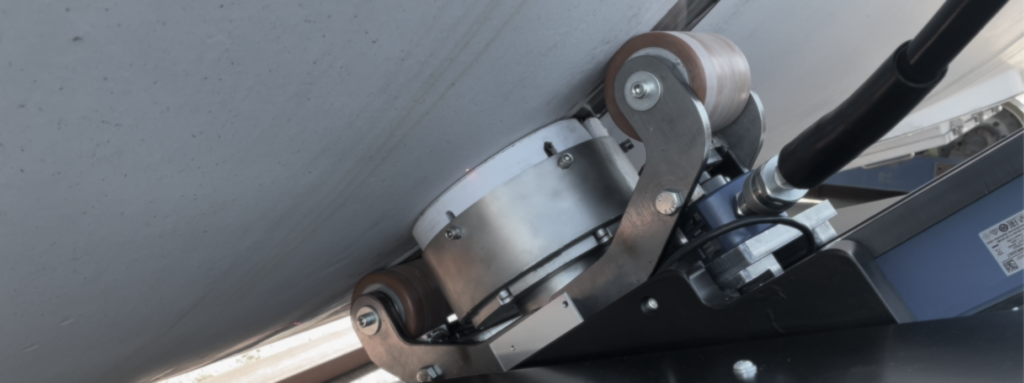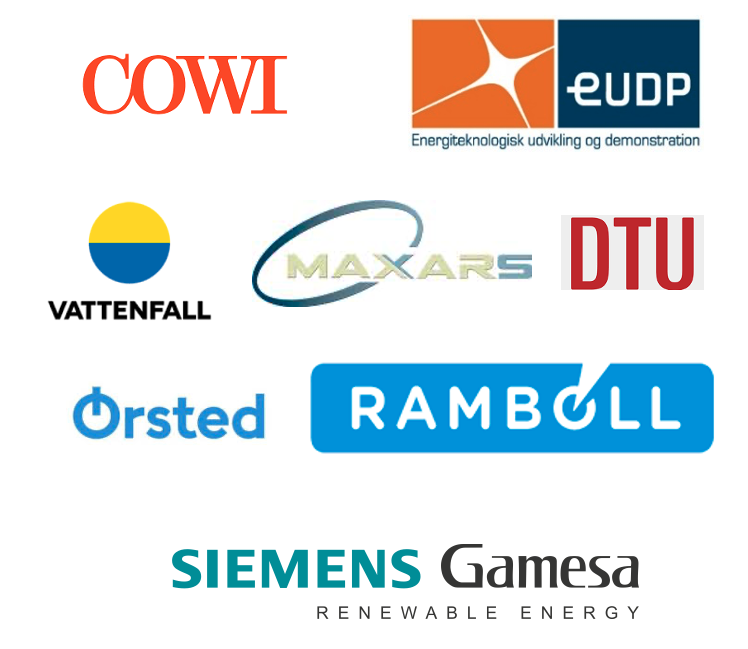Weld Profiling Robot
Single-pass operation, CNC-robotic weld profiling and fatigue strength improvement in wind turbine support structures means higher productivity, uniform quality and lower LCoE – and may enable new fatigue design standards
Weld Profiling Robot

Single-pass operation, CNC-robotic weld profiling and fatigue strength improvement in wind turbine support structures means higher productivity, uniform quality and lower LCoE
The MAX TM401 is a mobile and laser-guided 6-axis robot for uniform and CNC-quality profiling of inside and outside butt welds in tubular wind turbine support structures with a diameter larger than 4 meters:

______________
Single-pass operation removal of both weld face and weld toe undercuts.
______________
Algorithm controlled profiling of different weld geometries
______________
1,200 mm/min. at 3.2 μm Ra surface finish
______________
75 dB and dust-free operation with vacuum evacuation of shavings
Project simulations and machine rate calculations show that the 20-fold increase in productivity delivered by the TM401 translates into an up to 80 percent reduction in cost per meter weld profiling compared to manual belt and disc grinding.
3 simple steps to automated and uniform weld profiling
Steer the MAX TM401 to near an inside or outside weld seam and for the laser scanners to pick up the seam. Select weld geometry and weld profiling program in the operator panel. Wait less than a minute for the TM401 to align and to calculate and set milling angles according to weld geometry, weld profiling program and structure diameter.
When prompted by the TM401, initiate rotation of the monopile, transition piece or tower section at a rate of up to 1,200 mm/min. Rotation automatically activates weld profiling operation.
The laser scanners register completion of weld profiling operation and the milling tool is automatically retracted from the weld seam. When profiling inside welds, the robot will continue its forward motion until rotation of the structure is stopped.
Steer the robot to the next weld seam to be profiled.

3 simple steps to automated and uniform weld profiling
Steer the MAX TM401 to near an inside or outside weld seam and for the laser scanners to pick up the seam. Select weld geometry and weld profiling program in the operator panel. Wait less than a minute for the TM401 to align and to calculate and set milling angles according to weld geometry, weld profiling program and structure diameter.
When prompted by the TM401, initiate rotation of the monopile, transition piece or tower section at a rate of up to 1,200 mm/min. Rotation automatically activates weld profiling operation.
The laser scanners register completion of weld profiling operation and the milling tool is automatically retracted from the weld seam. When profiling inside welds, the robot will continue its forward motion until rotation of the structure is stopped.
Steer the robot to the next weld seam to be profiled.

Developed in collaboration with industry experts
The TM401 weld profiling robot was further developed as part of the Energy Technology Development and Demonstration Program (EUDP) project WINDWELD in which Siemens Gamesa Renewable Energy A/S, Ørsted A/S, Vattenfall AB, Cowi A/S, Rambøll A/S and the Wind Energy institute under the Danish Technical University (DTU) also participated.
The project report concluded that the milling robot technology proved efficient both in weld profiling operation and in improving working environment by eliminating dust from manual grinding.
The report found that the technical performance and environmental benefits of the milling robot provide strong grounds for designating the robot Best Available Technique (BAT) for replacing manual grinding and weld profiling.
The TM401 feature our proprietary chatter suppression solution for preventing resonance vibration and ensuring both productivity and quality.

High-rate and uniform quality CNC-robotic weld profiling and fatigue strength improvement for reducing LCoE of offshore wind energy
_____________
At its maximum rate of 72 meters weld profiling per productive machine hour (PMH) the TM401 approx. 20 times faster than current manual weld profiling procedures using belt grinding.
_____________
CNC-robotic removal of weld head and weld toe undercuts enables full and consistent compliance with DNV-RP-C203 guidelines – and may enable new fatigue design standards.
_____________
Machine rate calculations show that the 20-fold increase in productivity delivered by the TM401 translates into an up to 80 percent reduction in cost per meter weld profiling compared to manual belt grinding.
Stay updated on our CNC-robotic
weld profiling technology
Sign up to our newsletter and receive the latest from us on technology developments, product availability and service offerings.